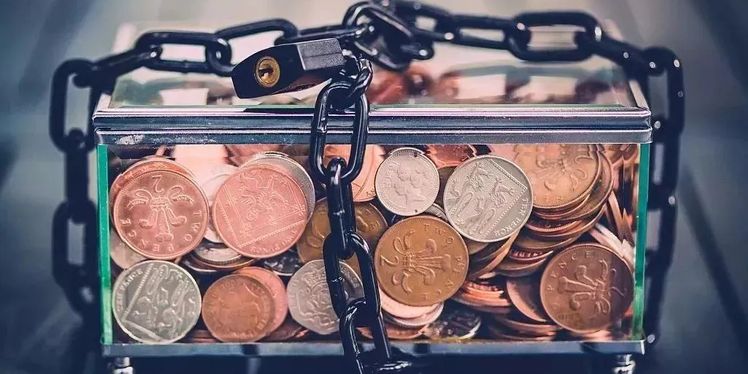The Financial Action Task Force (FATF) is an independent intergovernmental agency responsible for formulating and implementing financial policies. FATF mainly protects the global financial system from the threats of money laundering, terrorism financing, and proliferation financing of weapons of mass destruction, and formulates and perfects corresponding international standards to ensure that international standards keep pace with the times and are effective. In June 2019, the revised "FATF Standards" clearly put forward Anti-Money Laundering/Combating the Financing of Terrorism (AML/CFT) requirements for virtual assets and Virtual Asset Service Provider (VASPs). FATF also decided to complete a 12-month review before June 2020 to measure how jurisdictions and departments implement the revised virtual asset standards and monitor changes in the types, risks, and market structure of the virtual asset industry. On July 7, 2020, after 12 months of review, FATF completed the review of the implementation of the revised standard and issued the review report.

The rise of new technologies, products, and services is one of the major changes in the global financial system. On the one hand, these new technologies have the potential to stimulate financial innovation and improve the efficiency of financial operations. On the other hand, they also create new opportunities for criminals and terrorists to launder money or obtain funding for their illegal activities. In recent years, FATF's regulatory activities in the face of the risks caused by the rise of financial technology are as follows:
In June 2014, FATF issued a report on virtual currency and its payment mechanism to clarify the concept of virtual currency and analyze its risks in AML/CFT.
In June 2015, FATF introduced the "Guidance for a Risk-Based Approach to Virtual Currencies", calling on all countries to take coordinated actions to prevent virtual currencies from being used for crime and terrorism financing.
In October 2018, FATF revised the virtual asset standard through the revision of "Recommendation 15-New Technologies", and added two new definitions to the FATF vocabulary to clarify its application to virtual assets and virtual asset service providers.
In June 2019, the FATF revised the global standards to clearly apply the requirements of anti-money laundering and anti-terrorism financing to virtual assets and virtual asset service providers, and launched a 12-month applicability review.

In the review report published by the FATF, it is clearly stated that all countries can assess and mitigate the risks associated with virtual asset financial activities and service providers. Along with license authorization or by requiring service providers to register, they can be included in the scope of supervision by national competent authorities. Moreover, virtual asset service providers should be subject to the same anti-money laundering measures applicable to financial institutions.
The results of the report show that various jurisdictions and departments have made great progress in implementing the revised FATF standards. Of the 54 jurisdictions covered by the report, 32 jurisdictions have regulated the operating guidelines of Virtual Asset Service Provider (VASP), 3 jurisdictions have banned the operation of VASP, and the remaining 19 jurisdictions have not yet implemented the revised FATF standard in their domestic laws.
(1) Using virtual assets to launder money and transfer funds
Compared with cases that use traditional financial service products, most money laundering and transfer payment cases involve a relatively low value of virtual assets, and most cases only involve one type of virtual assets. In a small number of cases, criminals use more than one type of virtual assets mainly for the purpose of stratifying illegal income. Although the cases provided by jurisdictions usually focus on predicate crimes, such as money laundering, criminals often use virtual assets to evade financial sanctions and raise funds to support terrorist activities. The types of crimes involving virtual assets are complex and diverse, but drug-related crimes and fraud crimes (such as investment fraud and extortion) are the most common.

Since June 2019, the main methods of using virtual assets for money laundering and risk of transferring funds include: (1) Using value-added service providers registered or operating in jurisdictions that lack effective supervision, or using multiple value-added service providers. This makes it more difficult for the competent authorities to track transaction clues and buy more time for criminals to transfer the proceeds of crime. (2) Use various tools and methods to increase the anonymity of transactions. Including the registration of Internet domain names through agents, the use of DNS registrars to mask the real owners of domain names, and the use of decentralized exchanges and applications.
In response to the current COVID-19 pandemic, FATF jurisdictions have also discovered an increase in virtual assets transferred and concealed by the U.S. federal government. One jurisdiction reported the use of virtual assets to launder money from the sale of COVID-19 drugs.
(2) The development trend of the virtual asset market structure
Since June 2019, the virtual asset market has gradually focused on the "stable currency" that may be widely used, but too much focus on the "stable currency" market may lead to a substantial increase in the number of anonymous peer-to-peer virtual asset transactions. These transactions are carried out through unmanaged wallets, and the revised "FATF Standard" does not explicitly cover peer-to-peer transactions. Under the revised "FATF Standard", the expansion of the number and value of transactions that are not subject to "anti-money laundering" will bring about major legal regulatory loopholes. Jurisdictions must be forward-looking in this regard.



